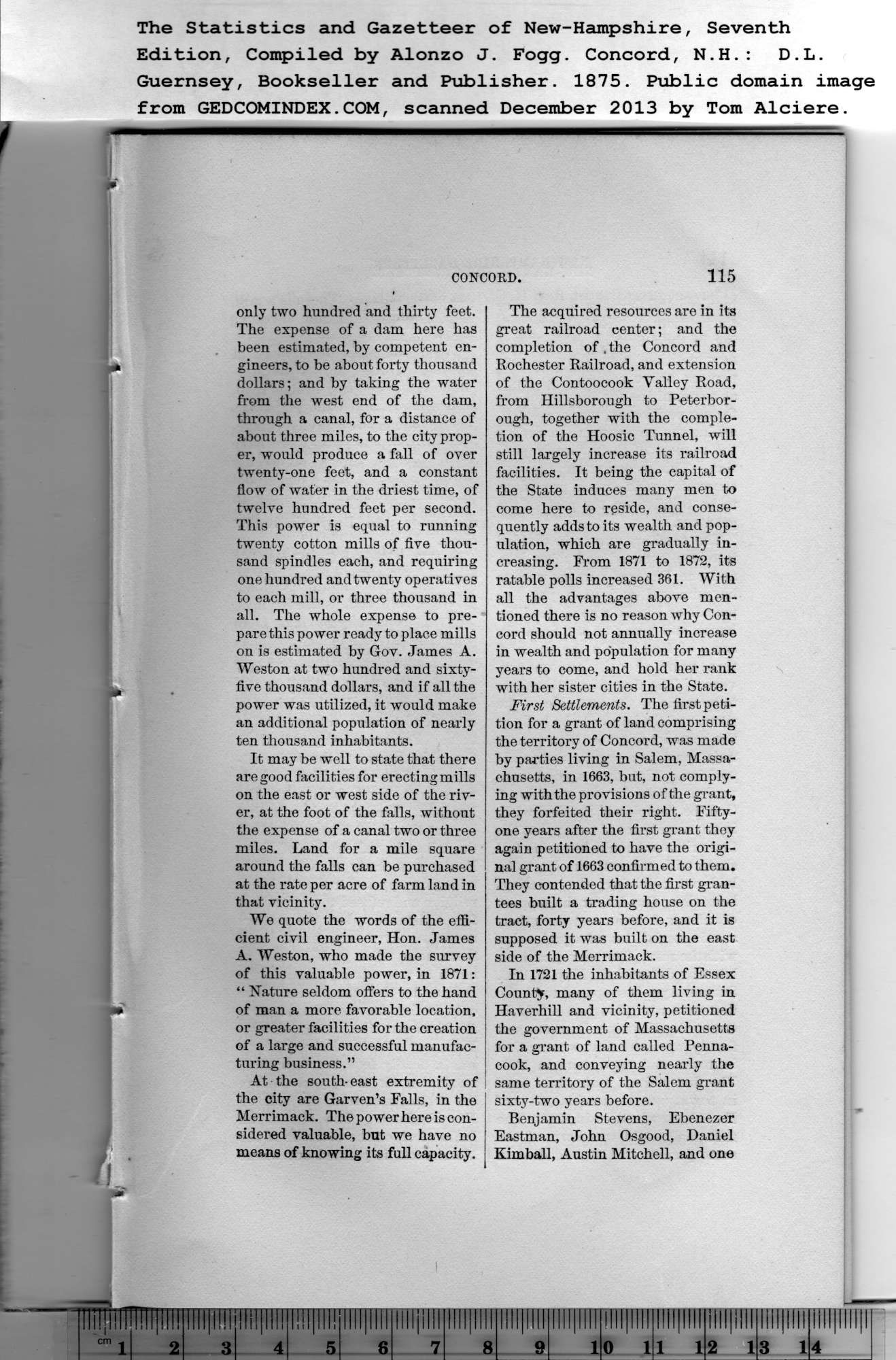|
only two hundred and thirty feet.
The expense of a dam here has
been estimated, by competent en-
gineers, to be about forty thousand
dollars; and by taking the water
from the west end of the dam,
through a canal, for a distance of
about three miles, to the city prop-
er, would produce a fall of over
twenty-one feet, and a constant
flow of water in the driest time, of
twelve hundred feet per second.
This power is equal to running
twenty cotton mills of five thou-
sand spindles each, and requiring
one hundred and twenty operatives
to each mill, or three thousand in
all. The whole expense to pre-
pare this power ready to place mills
on is estimated by Gov. James A.
Weston at two hundred and sixty-
five thousand dollars, and if all the
power was utilized, it would make
an additional population of nearly
ten thousand inhabitants.
It may be well to state that there
are good facilities for erecting mills
on the east or west side of the riv-
er, at the foot of the falls, without
the expense of a canal two or three
miles. Land for a mile square
around the falls can be purchased
at the rate per acre of farm land in
that vicinity.
We quote the words of the effi-
cient civil engineer, Hon. James
A. Weston, who made the survey
of this valuable power, in 1871:
“ Nature seldom offers to the hand
of man a more favorable location,
or greater facilities for the creation
of a large and successful manufac-
turing business.”
At the south-east extremity of
the city are Garven’s Falls, in the
Merrimack. The power here is con-
sidered valuable, but we have no
means of knowing its full capacity.
|
The acquired resources are in its
great railroad center; and the
completion of . the Concord and
Rochester Railroad, and extension
of the Contoocook Valley Road,
from Hillsborough to Peterbor-
ough, together with the comple-
tion of the Hoosic Tunnel, will
still largely increase its railroad
facilities. It being the capital of
the State induces many men to
come here to reside, and conse-
quently adds to its wealth and pop-
ulation, which are gradually in-
creasing. From 1871 to 1872, its
ratable polls increased 361. With
all the advantages above men-
tioned there is no reason why Con-
cord should not annually increase
in wealth and population for many
years to come, and hold her rank
with her sister cities in the State.
First Settlements. The first peti-
tion for a grant of land comprising
the territory of Concord, was made
by parties living in Salem, Massa-
chusetts, in 1663, but, not comply-
ing with the provisions of the grant,
they forfeited their right. Fifty-
one years after the first grant they
again petitioned to have the origi-
nal grant of 1663 confirmed to them.
They contended that the first gran-
tees built a trading house on the
tract, forty years before, and it is
supposed it was built on the east
side of the Merrimack.
In 1721 the inhabitants of Essex
County, many of them living in
Haverhill and vicinity, petitioned
the government of Massachusetts
for a grant of land called Penna-
cook, and conveying nearly the
same territory of the Salem grant
sixty-two years before.
Benjamin Stevens, Ebenezer
Eastman, John Osgood, Daniel
Kimball, Austin Mitchell, and one |
